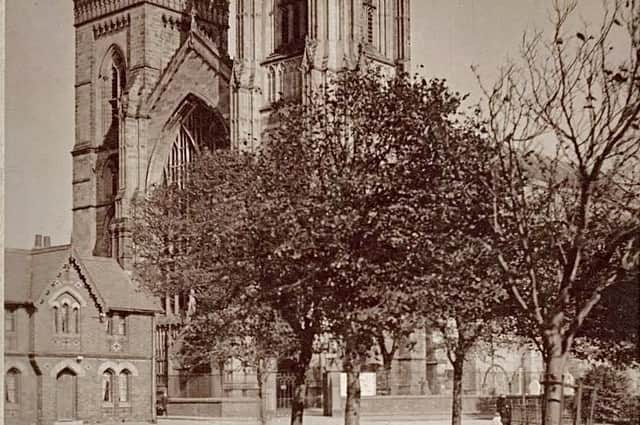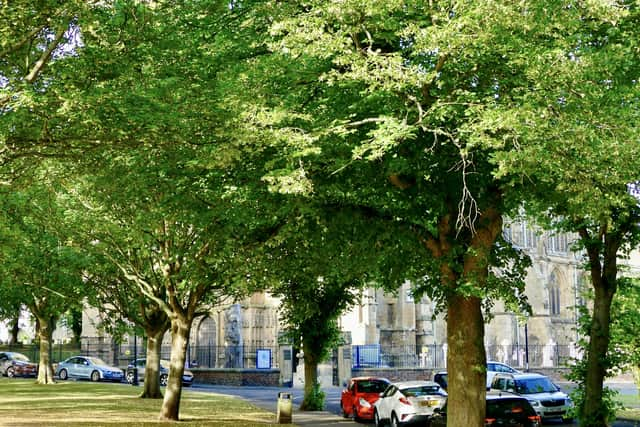The ‘Now and Then’ column with Aled Jones: Looking at the area around Bridlington Priory


Mr Jones contrasts a vintage postcard from 1924 with a modern day photo while bring ing to life the venue’s history.
Mr Jones said: “Founded in 1113, during the reign of Henry I, Bridlington’s Priory Church nestles at the junction of Kirkgate, Church Green and Sewerby Road. This vintage view shows the church and the former Infants’ National School (left) that, for over 50 years, played a huge role in local education.
Advertisement
Hide AdAdvertisement
Hide Ad“The school was built in 1857 right next door to the old Bull and Sun Inn, demolished 1866. Its empty site was converted into a playground. The school closed in 1910 and at this time there were 160 children in attendance.


“There’s a line of three trees in the postcard (centre) but only two remain in the modern photo. Which tree is missing? I think it’s the middle one of the three. What’s certain is that the remaining two trees have grown out of all proportion in the last hundred years, so much so, they obscure the Priory’s massive towers from this viewpoint.
“The Priory is shown as it was after the restoration work of 1878-9 by Sir George Gilbert Scott, a key figure in the Gothic revival, who raised the height of the south-west tower, creating its familiar Perpendicular appearance today.
“The postcard, grubby with age, has a postmark dated June 11, 1924, and a red one penny stamp of George V.
Advertisement
Hide AdAdvertisement
Hide Ad“However, due to the schoolhouse being present (demolished 1911), its production date can be estimated to be at least 10 years earlier.
“Bridlington Priory, in its original form, was simply colossal, being more than 390 feet in length (just the nave is left today). It was second only in size in Yorkshire to mighty York Minster! Before the Reformation, there were two large transepts, a tall central bell tower, and a choir chapel that only the monks could use.
“The medieval Priory played a leading economic and trade role for more than 400 years, which made it very wealthy. In those days Bridlington was an important port, acting as a gateway to the rest of Europe.
“Moreover, pilgrims flocked to the Priory, and owing to their donations the wealth and prestige of the monastery was immeasurably advanced. Bridlington had its very own Saint, John of Thwing, whose shrine attracted thousands of visitors each year, some of whom came from the continent. There were even lucrative visits from members of the Royal Family, including Henry IV in 1407 and Henry V in 1421.
Advertisement
Hide AdAdvertisement
Hide Ad“The suppression of Bridlington Priory, in 1538, destroyed four centuries of knowledge and learning in as many months. To make matters worse, William Wood, its last Prior, was convicted of treason and hanged at Tyburn.
“No edifices escaped mutilation, not even the Great Barn, and certainly not the hallowed shrine of Saint John, which was smashed into a thousand pieces. Only the nave was left untouched, allowed to continue in its role as the town’s parish church. Generosity was never Henry VIII’s strong point.”